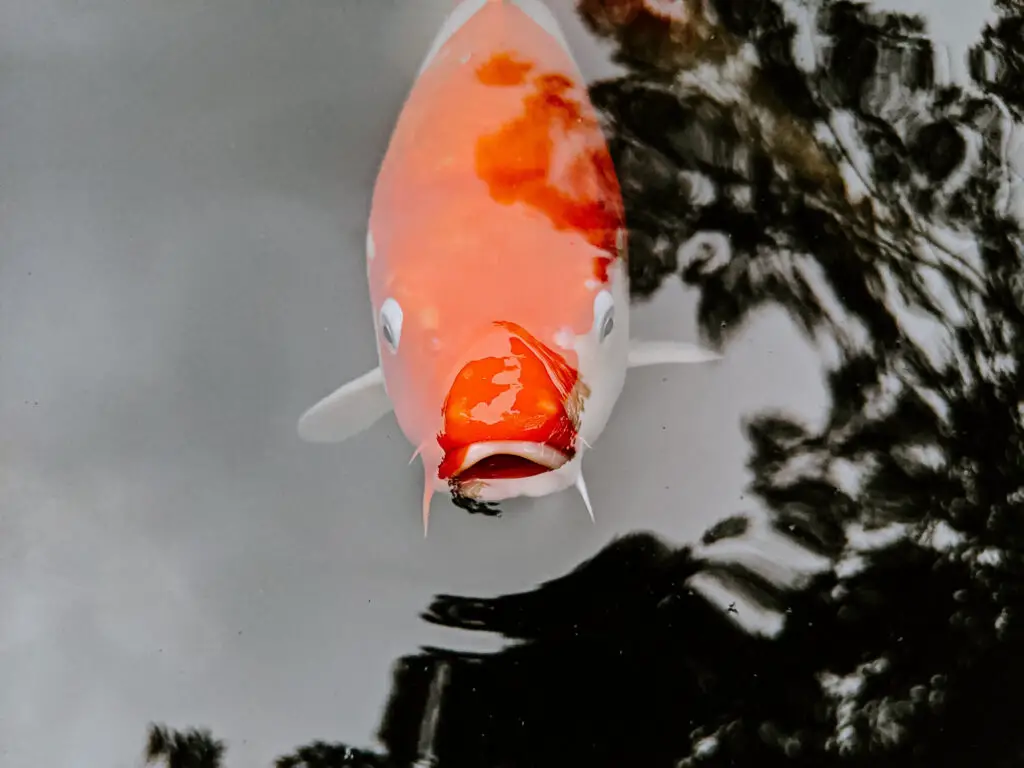
Koi’s whiskers are commonly called barbels and are visible around their mouth and chin. This is one characteristic that distinguishes them from goldfish, which have none. Koi have one barbel on either side of the mouth and two on the upper lip, making four.
All koi fish have whiskers. They are a defining characteristic of koi and a means of telling them apart from goldfish who have none. Koi’s barbels contain sensory organs that taste and smell their food and are naturally white, black, or brown, but some koi owners dye them to match their scales.
Koi barbels are like little feelers but, unlike a cat’s whiskers, are used for taste and smell, not touch. They are covered with olfactory organs and taste buds that enable the fish to identify food in murky water. But do all koi have barbels or only some of them – we investigate further in this article.
Pro Tip: If you’re tired of wasting money and making costly mistakes on the koi-keeping hobby or are thinking about buying koi fish but don’t know where to start, I strongly suggest you check out this ebook. I recently read this ebook, and it contains SO much useful information, such as:
- 3 proven steps to identify koi fish diseases
- WARNING: 3 things you should NEVER do when it comes to caring for koi
- When to seek professional help when it comes to looking after your koi
Do All Koi Fish Have Whiskers?
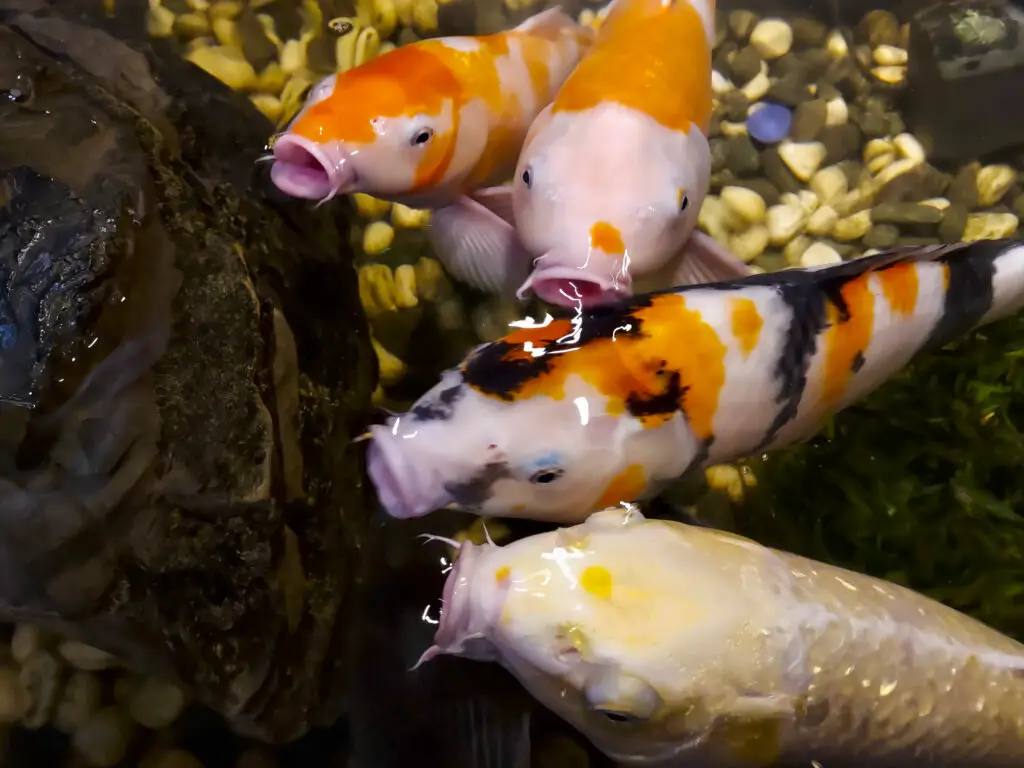
The ancestors of koi, common wild carp, were bottom feeders that foraged in the muddy sediments in ponds and lakes for food. Since visibility in these conditions isn’t good, the fish needed to identify what was food and what wasn’t without having sight of it. Enter maxillary barbels!
In some cases, a koi may have damaged or deformed barbels or even missing barbels, but generally speaking, barbels are a characteristic of all koi fish. The word “barbel” is derived from the Latin word “barbula” and means little beard. Koi have maxillary barbels, which means they are positioned at the sides of the mouth.
The top two barbels in koi are typically smaller than the bottom two. In koi competitions, judges will score a koi with missing or deformed barbels lower than those with all their barbels present and correct. Koi are required to have barbels as they are one of the fish’s defining traits.
People often confuse small orange koi with goldfish until they see them up close and count the barbels, but those with a more expert eye also look at the shape of the fins and the body. All koi have a characteristic body shape but come in a much wider variety of patterns and colors than goldfish.
There are more than one hundred koi fish varieties, classified according to their body shapes, patterns, and colors, some of the most well-known being:
- Hariwake
- Kukusui
- Goshiki
- Kohaku
- Goromo
- Soragoi
- Kujaku
- Shiro Usuri
- Ogon
- Asagi
- Chagoi
- Utsuri
Ki Utsuri is the rarest type of Utsuri with a yellow and black body, while Hi Utsuri has black and reddish-orange coloration. Black, white, and orange Beni Kikokuryu sell for two thousand dollars each. A koi called S Legend, a Kohaku, is the most expensive koi in the world, selling for just under two million dollars.
Koi come in various combinations of gold, black, red, white, blue, brown, orange, platinum, and yellow, and some have metallic-looking scales. Regardless of their pattern, coloring, and value, they all have barbels.
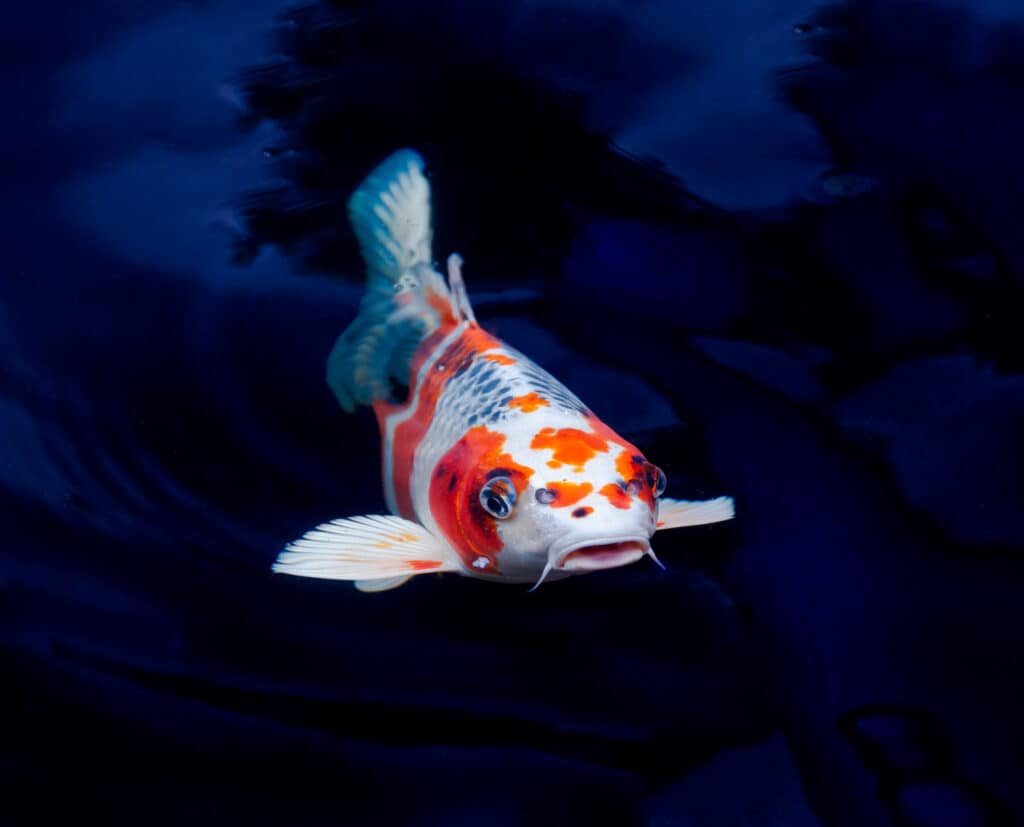
Male and female koi have the same-sized barbels, so one cannot look at barbel length to tell the gender of the koi fish.
What Does It Mean If A Koi Doesn’t Have Barbels?
Koi can breed with goldfish since they are both carp varieties. However, the ancestor of the goldfish is a different carp called the Prussian carp, so they are not the same fish. Hybrids will sometimes have two tiny barbels or none, while true koi always have four.
A koi hybrid can get bigger than a typical goldfish but won’t usually grow to the same size as a purebred koi. Like the offspring produced by a donkey and a horse, i.e., a mule, koi hybrids of both genders are sterile and cannot reproduce. A koi-goldfish hybrid is not considered a true koi, and some people say they are ugly.
A “koi” without barbels is generally a goldfish! A shubunkin is often called ”poor man’s koi” but is not a koi and has a rounded, blunt nose with no barbels. They are a hardy species of goldfish. Catfish also have much longer barbels than koi.
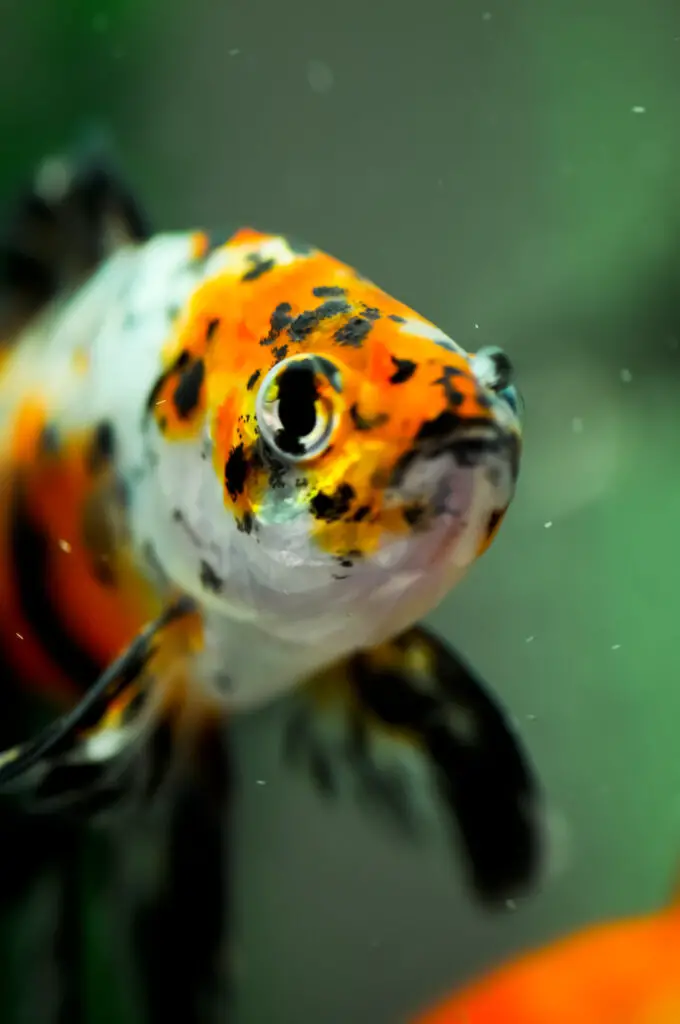
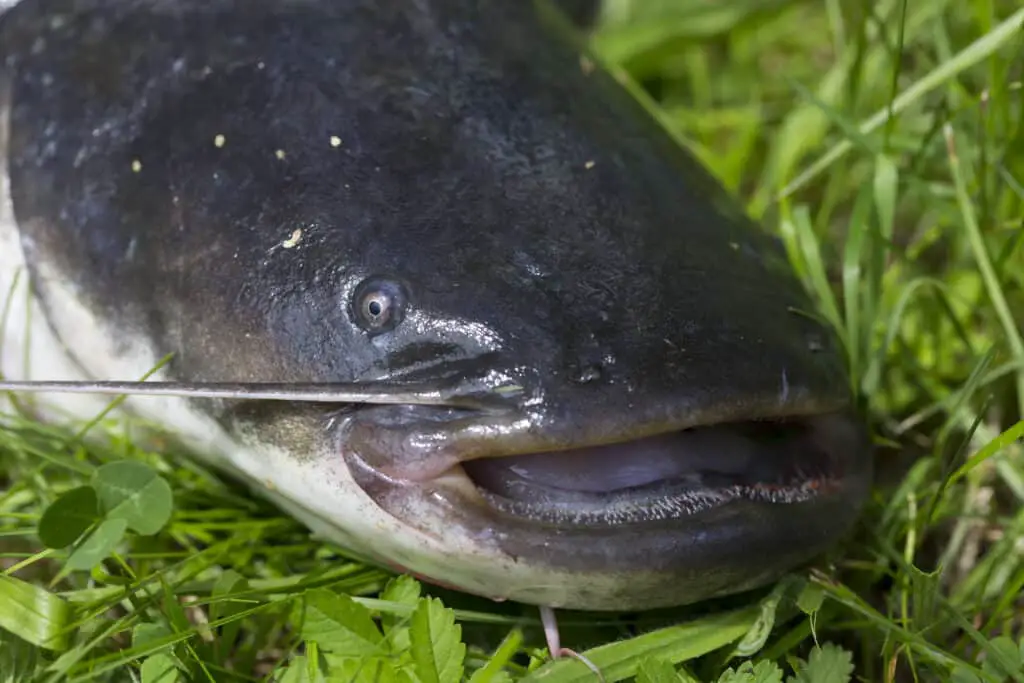
Do Baby Koi Fish Have Barbels?
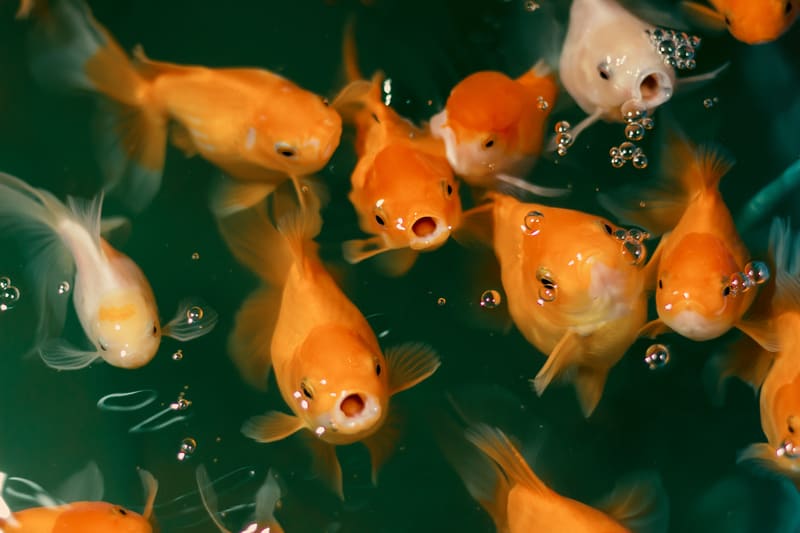
Koi under one inch in length may not have visible barbels yet. The first set of barbels may only look like little transparent stubs. This first set appears when the fish are a few weeks old and are temporary. They fall off within a few months as the fish grows.
The second set of barbels is more visible and appears as the fish gets bigger. The second set eventually falls off, and the third and final set grows. These barbels are the longest and can be between one and three inches long, depending on the koi variety. The third set of barbels is typically brown, black, or white.
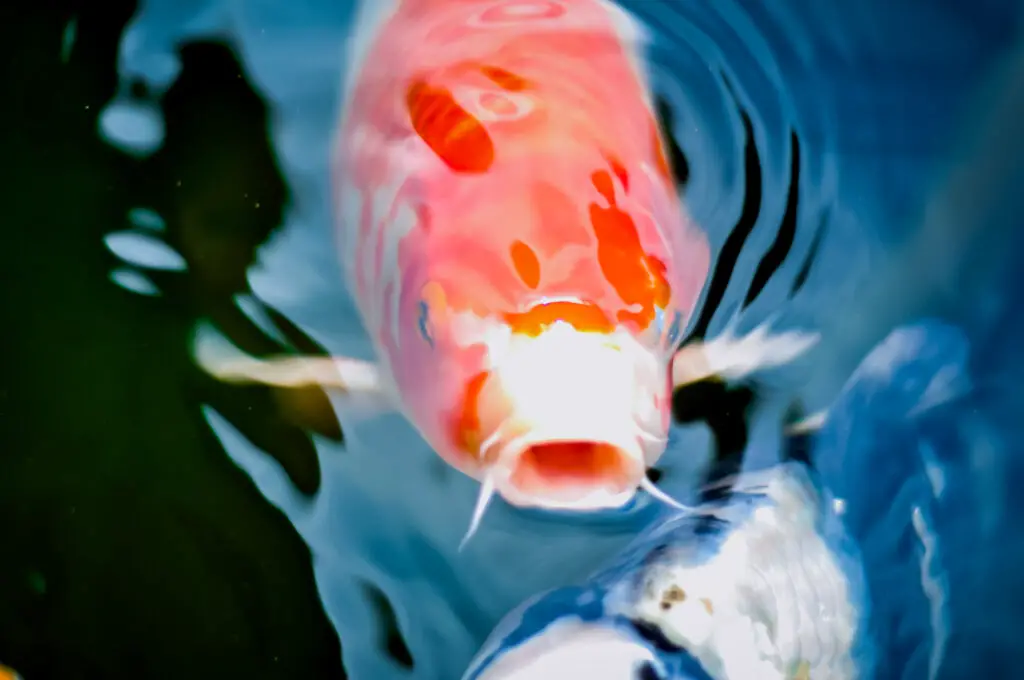
The final set of barbels only appears when the koi is between three and four years old. The barbels are typically slender and grow to a point. The barbels react differently to different tastes. Experiments have shown that they are not too sensitive to sweet flavors but react strongly to sour or bitter tastes.
Koi have taste buds inside their mouths, on their tongues and lips, and barbels, and can distinguish between salty, bitter, sour, and sweet. Hundreds of years ago, koi had three sets of barbels, but these days they have two. Barbels enable koi to detect food hidden in mud and gravel.
Barbels can get broken if koi are netted incorrectly while being transferred between tanks or ponds. Some fish store owners will cut it off if a barbel is damaged. This decreases the value of the fish for competition purposes, but it’s okay for the common garden koi pond.
Which Koi Varieties Have The Longest Barbels?
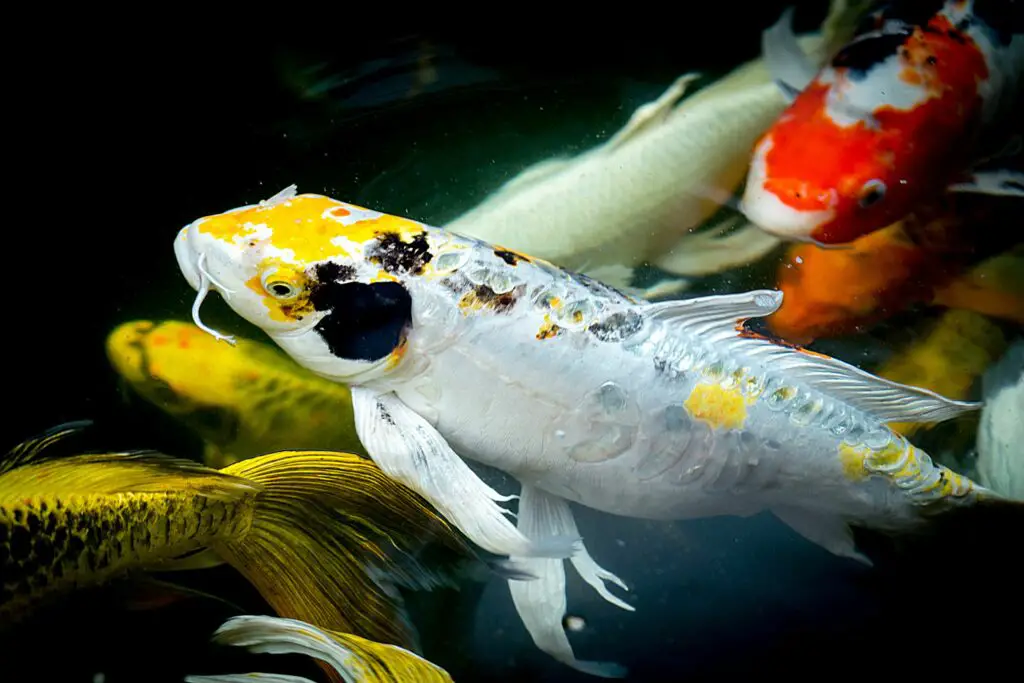
Butterfly koi are still controversial in some Japanese koi circles. It took a while for them to be accepted by koi breeders, but they are true koi and very popular in the US. Their barbels grow pretty long compared to those of other koi varieties.
Butterfly koi are thinner than other koi varieties and have longer fins. They cross between long-finned carp and regular koi but have the same environmental and food requirements. Their long flowing fins and tails look stunning, and koi keepers highly value them for their beauty.
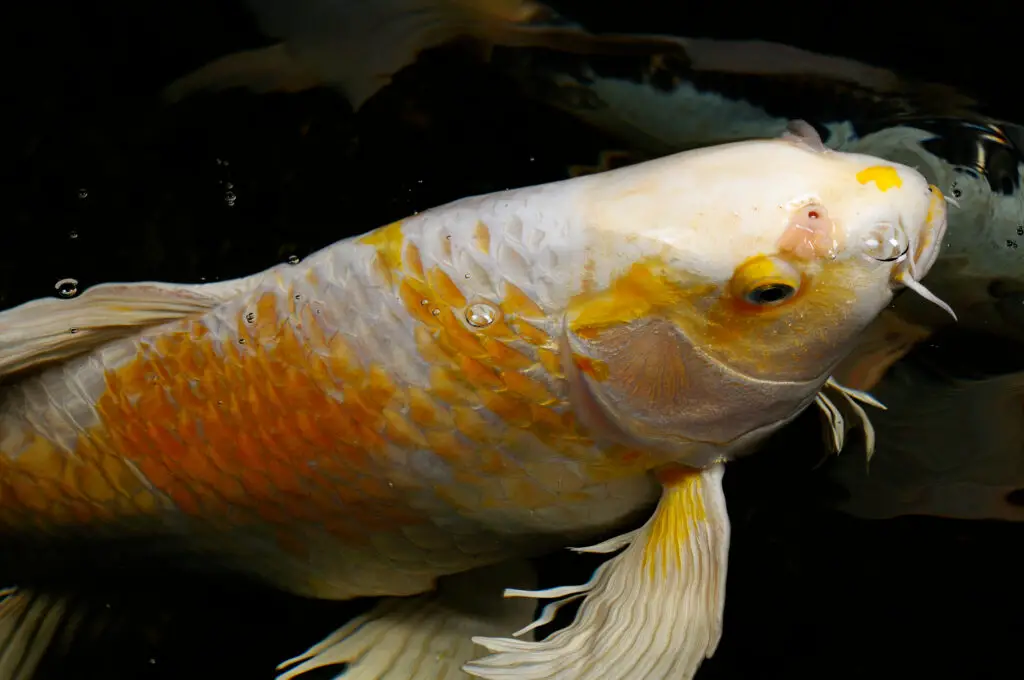
The barbels of butterfly koi grow long and may even fork into intricate shapes. Sorogoi is an example of butterfly koi, but you also get black ones that are extremely rare. The most valuable is the doistsu, karasu butterfly, which has no scales and is entirely black. They grow larger than their more colorful cousins.
Conclusion
No matter which variety of koi you have in your pond, they all have barbels. If your fish don’t have four barbels, they are not koi. Hybrids of koi and goldfish are relatively common in ponds where they are kept together and may have two barbels or none. Goldfish don’t have barbels.
References:
https://www.allpondsolutions.co.uk/fishkeeping-advice/koi-varieties-a-beginners-guide.html
https://www.theanimalfiles.com/glossary/barbel.html
https://animals.mom.com/difference-koi-vs-goldfish-4966.html
https://en.wikipedia.org/wiki/Barbel_(anatomy)
https://petkeen.com/can-koi-and-goldfish-breed-together/
https://aboutbackyard.com/koi-barbels/
https://www.aquascapeinc.com/water-gardening/fish/butterfly-koi


